
A photograph is an image created by light falling on a photosensitive surface, usually photographic film or an electronic image sensor, such as a CCD or a CMOS chip. Most photographs are now created using a smartphone or camera, which uses a lens to focus the scene's visible wavelengths of light into a reproduction of what the human eye would see. The process and practice of creating such images is called photography.

Closed captioning (CC) and subtitling are both processes of displaying text on a television, video screen, or other visual display to provide additional or interpretive information. Both are typically used as a transcription of the audio portion of a program as it occurs, sometimes including descriptions of non-speech elements. Other uses have included providing a textual alternative language translation of a presentation's primary audio language that is usually burned-in to the video and unselectable.
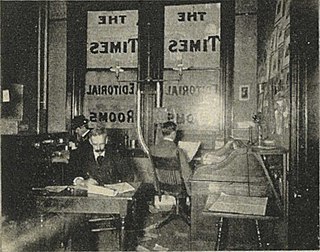
Editing is the process of selecting and preparing written, visual, audible, or cinematic material used by a person or an entity to convey a message or information. The editing process can involve correction, condensation, organization, and many other modifications performed with an intention of producing a correct, consistent, accurate and complete piece of work.

In a raster scan display, the vertical blanking interval (VBI), also known as the vertical interval or VBLANK, is the time between the end of the final visible line of a frame or field and the beginning of the first visible line of the next frame or field. It is present in analog television, VGA, DVI and other signals.

Copy editing is the process of revising written material ("copy") to improve readability and fitness, as well as ensuring that a text is free of grammatical and factual errors. The Chicago Manual of Style states that manuscript editing encompasses "simple mechanical corrections through sentence-level interventions to substantial remedial work on literary style and clarity, disorganized passages, baggy prose, muddled tables and figures, and the like ". In the context of print publication, copy editing is done before typesetting and again before proofreading. Outside traditional book and journal publishing, the term "copy editing" is used more broadly, and is sometimes referred to as proofreading; the term sometimes encompasses additional tasks.

Photojournalism is journalism that uses images to tell a news story. It usually only refers to still images, but can also refer to video used in broadcast journalism. Photojournalism is distinguished from other close branches of photography by having a rigid ethical framework which demands an honest but impartial approach that tells a story in strictly journalistic terms. Photojournalists contribute to the news media, and help communities connect with one other. They must be well-informed and knowledgeable, and are able to deliver news in a creative manner that is both informative and entertaining.
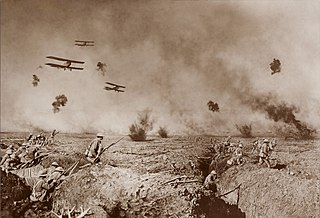
Photograph manipulation involves the transformation or alteration of a photograph. Some photograph manipulations are considered to be skillful artwork, while others are considered to be unethical practices, especially when used to deceive. Photographs may be manipulated for political propaganda, to improve the appearance of a subject, for entertainment, or as humor.
In publishing, advertising and related fields, copy is written material, in contrast to photographs or other elements of layout, in books, magazines, newspapers and advertising.
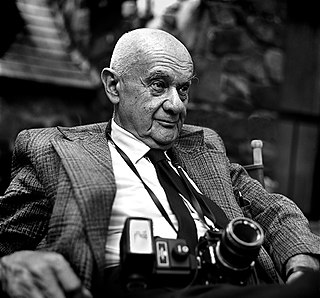
Roman Vishniac was a Russian-American photographer, best known for capturing on film the culture of Jews in Central and Eastern Europe before the Holocaust. A major archive of his work was housed at the International Center of Photography until 2018, when Vishniac's daughter, Mara Vishniac Kohn, donated it to The Magnes Collection of Jewish Art and Life at the University of California, Berkeley.
Taiwanese photography is deeply rooted in the country's unique and rapidly changing history. Its early photography is often divided into two periods: Pre-Japanese from approximately 1858 to 1895, and an Era of Japanese Influence, from 1895 to 1945, the year the Japanese rule of Taiwan ended. Many photographs from the period during which Taiwan was under Japanese rule have been preserved as postcards. Much of the pre-Japanese era photography was conducted by foreign missionaries and merchants.
A weekly newspaper is a general-news or current affairs publication that is issued once or twice a week in a wide variety broadsheet, magazine, and digital formats. Similarly, a biweekly newspaper is published once every two weeks. Weekly newspapers tend to have smaller circulations than daily newspapers, and often cover smaller territories, such as one or more smaller towns, a rural county, or a few neighborhoods in a large city. Frequently, weeklies cover local news and engage in community journalism.

A coffee table book, also known as a cocktail table book, is an oversized, usually hard-covered book whose purpose is for display on a table intended for use in an area in which one entertains guests and from which it can serve to inspire conversation or pass the time. Subject matter is predominantly non-fiction and pictorial. Pages consist mainly of photographs and illustrations, accompanied by captions and small blocks of text, as opposed to long prose. Since they are aimed at anyone who might pick up the book for a light read, the analysis inside is often more basic and with less jargon than other books on the subject. Because of this, the term "coffee table book" can be used pejoratively to indicate a superficial approach to the subject..

In graphic design, page layout is the arrangement of visual elements on a page. It generally involves organizational principles of composition to achieve specific communication objectives.

Kineo Kuwabara was a Japanese editor and photographer, known for photographing Tokyo for over half a century.

Cycling Weekly is the world's oldest cycling publication. It is both a weekly cycling magazine and a news, features and buying advice website. It is published by Future. It used to be affectionately referred to by British club cyclists as "The Comic".

There has been demand for imagery of nude celebrities for many decades. It is a lucrative business exploited by websites and magazines.

The Stroop Report is an official report prepared by General Jürgen Stroop for the SS chief Heinrich Himmler, recounting the German suppression of the Warsaw Ghetto Uprising and the liquidation of the ghetto in the spring of 1943. Originally titled The Jewish Quarter of Warsaw Is No More!, it was published in the 1960s.
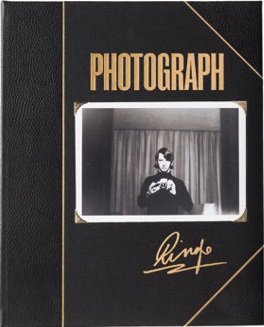
Photograph is a photography book by Ringo Starr. The book is a collection of 240 photographs of Starr's that also serves as an autobiography through the photo captions. The title of the book is the also the title of his 1973 single "Photograph". The book was first published in 2013 in a deluxe 2,500-copy limited edition by Genesis Publications, and later in a mass edition in 2015.
This glossary of journalism is a list of definitions of terms and concepts used in journalism, its sub-disciplines, and related fields, including news reporting, publishing, broadcast journalism, and various types of journalistic media.
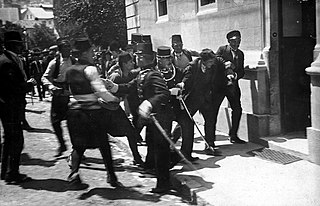
Arrest of a Suspect in Sarajevo, also erroneously known as The Arrest of Gavrilo Princip, is a historically significant photograph that captured the immediate aftermath of the assassination of Archduke Franz Ferdinand of Austria and his wife Sophie, Duchess of Hohenberg, in Sarajevo on 28 June 1914. Originally believed to depict the apprehension of the assassin, Gavrilo Princip, the image gained widespread attention after being featured prominently on the front cover of the Austrian weekly newspaper Wiener Bilder on 5 July 1914. This portrayal played a crucial role in generating patriotic sentiments that unified allied nations at the onset of World War I.
















